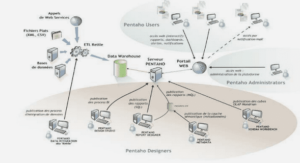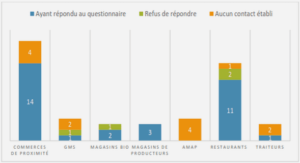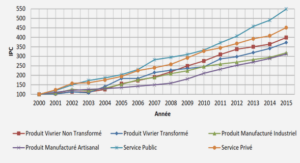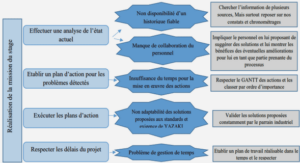Automated teller machine system
Detailed Research Methodology
Literature review
The objective of this phase was to develop an in-depth understanding of the scaling factors issue. This step is focused on analyzing the literature related to early approximation of software functional size and the literature related to the quality of software functional requirements. The aim of this step is to build an in-depth understanding of the literature contributions, the challenges encountered, and their shortcomings.
Experimentation of an existing COSMIC approximation method
This step will consist of an experiment to aimed to evaluate the reproducibility and accuracy of the approximation results using only the concepts and the rules of the E&Q COSMIC technique: this will be achieved by asking a group of practitioners with significant experience in the software engineering industry to apply the E&Q COSMIC technique to a set of early
functional requirements specifications.
Step 2.1 Objective and purpose experimentation
The objective of this experiment is to evaluate the reproducibility and accuracy of the approximation results of one of the E&Q techniques using the information actually available to the practitioners that is without the preliminary steps not available to the practitioners and to the industry in general: the participants in this experiment will be asked to classify a set of software requirements specifications in accordance to their level of granularity into the different E&Q COSMIC functional components.
Step 2.2 Context and scope
This step will focus on the identification of the case study that is suitable for this experimental study: the case study that has been selected presents real-time software that is used for usability testing.
Step 2.3 Experiment preparation
This step will focus on preparing the experimental settings for experimentation including the experiment material such as the case study, and the participation consent form. The experimental settings will also include the call-for-participation, pre-experiment training session and conducting a pilot test of the experiment with the help of an independent expert in order to identify and eliminate any challenges prior to the experimental session.
Step 2.4: Experimentation and analysis
This step will focus on conducting the experiment with the participants who will volunteer to participate in the experimental study. The objective of this step is to observe the impact of applying an early functional size approximation technique without using the scaling factors framework or any other guideline to identify the correct level of granularity of the requirements specifications presented in the case study.
Design of the scaling factors framework
The objective of this phase is to design the scaling factors framework to identify the levels of granularity of functional requirements specifications of software development projects. This phase of the research methodology will consist of the following steps:
Step 3.1: Identification of the relevant concepts
This step will focus on the identification and the analysis of the relevant concepts that the requirements engineers need to consider to allow for a full-functional specification of the functional requirements at the early stages of software development projects.
Step 3.2: Definition of the scaling factors
This step will focus on the definition of the type and the format of the scaling factors that will be assigned by the scaling factors framework to the functional requirements of software development projects.
Step 3.3: Design of the meta-model
This step will focus on the design of a meta-model to capture the identified concepts and the defined scaling factors: this step will include the selection an appropriate modeling language for the design of the meta-model and building the meta-model hierarchy.
Step 3.4: Design of criteria
This step will focus on the design of criteria to be applied by the requirements engineers to identify the level of granularity of early versions of the functional requirements specifications on the early stages of the software development life cycle.
Certification from the committee for ethics in research
The objective of this phase is to obtain a certification from the committee for ethics in research at École de technologie supérieure – Université du Québec in order to acknowledge and approve the ethical aspects in this research project. The committee for ethics in research must ensure that the participation of the participants in the experimental studies is fully ethical including mode of recruitment, freedom of participation, the non-existence of risk due participation, the confidentiality of participation and the collected data in the experimental studies. This phase of the research methodology consists of the following steps:
Step 4.1: Application for certification
This step will focus on the presentation of all the necessary documentation for the committee for ethics in research in order to obtain their approval to conduct the experimental studies: this includes filling the application form, copy of the experiment material such as the participation consent form, the number of participants in each experimental study and any existence of conflicts of interests and how these conflicts are mitigated or avoided and the place of preserving the collected data.
Step 4.2: Reporting to the committee for ethics in research
This step will focus on providing a full report to the committee for ethics in research after conducting the experimental studies, and completing the analysis of the data collected during the experimental studies: it includes reporting of any change on the mode of experimentation or the research methodology, and the actual number of participants who actually participated in the experimental studies.
Verification of the usability of the scaling factors framework
The objective of this phase is to verify that the scaling factors framework is usable by a representative variety of industry practitioners with different levels of experience in the software engineering field: they should have been involved in different stages of the development life cycle of software projects. This phase will include conducting three (3) experimental sessions to apply the scaling factors framework with the same case study by three (3) different groups of industry practitioners.
Step 5.1: Objective and purpose of the experimentation
This experimental step is to verify the usability of the designed scaling factors framework: the participants in this experimental study will be asked to assign scaling factors to a set of non-complete, non-detailed software requirements specifications at the early stages of the software development life cycle by using the scaling factors framework in order to identify the levels of granularity of these requirements specifications.
Step 5.2: Context and scope
This step will focus on the identification and selection of the case study that is suitable for this experimental study: the case study that has been selected presents a management information system. The case study that will be selected has to be easy to understand in order minimize the learning curve of the participants in understanding the case study and keep their concentration on understating the concepts that the scaling factors framework has to offer: this is due to the limited time the participants will have to apply the concepts the scaling factors framework on the requirements specification presented in the case study.
Step 5.3: Experiment preparation
This step will focus on preparing the experimental settings for experimentation including the experiment material such as the scaling factors framework, the case study, and the participation consent form. The experimental settings will also include the call-forparticipation, pre-experiment training session, and conducting a pilot test of the experiment with the help of an independent expert in order to identify and eliminate any challenge prior to the experimental session.
Step 5.4: Experimentation and analysis
This step will focus on conducting the experimental study by the three (3) groups of participants who will volunteer to participate in this experimental study.
Definition of interval scaling factors
The objective of this phase is to define a set of interval scaling factors to rank the levels of granularity of the software requirements specifications using the measurement unit of the COSMIC measurement method (i.e. COSMIC Function Point – CFP). The levels of granularity of software functional requirements specifications – at this stage – is already identified using the set of criteria designed in Step 3.4.
Step 6.1: Analysis of the proposed interval scaling factors in the literature
This step will focus on analyzing the interval scaling factors proposed in the literature in order to identify the appropriate strategy to follow in the definition of the interval scaling factors of the scaling factors framework.
Step 6.2: Define the interval scaling factors
This step will focus on the definition of the interval (numerical) scaling factors that rank the levels of granularity of the functional requirements specifications using the measurement unit of the COSMIC measurement method. This step is to transform the set of ordinal scaling factors into a set of interval scaling factors.
Verification of the applicability of the scaling factors framework
The objective of this phase is to verify that the scaling factors framework is applicable to a variety of sets of software requirements specifications which represent software applications that are different in software type, business objective, context, and software functional size: the principal researcher will select four (4) case studies that achieve these criteria. Another objective is to observe the impact of using the scaling factors framework prior to the functional size approximation process.
Step 7.1: Objective and purpose experimentation
The objective is to verify the applicability of the scaling factors framework with variety sets of case studies that represents software requirements specifications that are documented as observed in the early phases (typically non-complete and non-detailed requirements specifications) of the software development life cycle. Another objective includes observing the impact of identifying the correct levels of granularity of the requirements specifications on the approximation of functional size.
Step 7.2: Context and scope
This step will focus on the identification and selection of the case studies that are suitable for this experimental study: the case studies must present software applications from both business application domain and real-time domain and differ in their business objective, context.
Step 7.3: Experiment preparation
This phase will focus on preparing the case studies selected for experimentation by the principal researcher. This includes measuring their functional size using the international standard for functional size measurement: ISO19761 – COSMIC and modifying the functional specifications of the case studies in order to adapt them to the objective of this experimental study.
Step 7.4: Experimentation and analysis
This step will focus on conducting the experimental study by the principal researcher in order to observe the impact of applying the scaling factors framework to identify the correct levels of granularity of the requirements specifications presented in the case studies.
|
Table des matières
INTRODUCTION
CHAPTER 1 SOFTWARE FUNCTIONAL SIZE IN THE LITERATURE
1.1 Introduction
1.2 Software Effort Estimation
1.3 Software Functional Size Approximation
1.3.1 Direct approximation techniques
1.3.2 Derived approximation techniques
1.3.3 Studies on functional size approximation
1.4 Chapter Summary
CHAPTER 2 SOFTWARE REQUIREMENTS QUALITY IN THE LITERATURE
2.1 Introduction
2.2 Software Requirements & Elicitation Process
2.2.1 Software requirements
2.2.2 Software requirements elicitation process
2.3 Software Requirements Modeling
2.3.1 The Unified Modeling Language
2.3.2 Use case scenarios
2.4 Software Requirements Quality
2.4.1 Studies for high-quality software requirements
2.4.2 Experimental studies on requirements quality
2.5 Chapter Summary
CHAPTER 3 RESEARCH GOAL, OBJECTIVES AND METHODOLOGY
3.1 Introduction
3.2 Research Motivation
3.3 Research Approach
3.4 Research Goal
3.5 Research Objectives
3.6 Research Inputs
3.7 Overview of Research Methodology
3.8 Detailed Research Methodology
CHAPTER 4 AN EXPERIMENT TO EVALUATE A FUNCTIONAL SIZE APPROXIMATION TECHNIQUE
4.1 Introduction
4.2 The Early & Quick Techniques
4.3 The Experiment Design
4.3.1 Experiment purpose & objective
4.3.2 Identification of the case study
4.3.3 Experiment preparation
4.3.4 Pre-experiment training
4.3.5 Conducting the experiment
4.4 The Experimental Results
4.4.1 Descriptive data from the experiment
4.4.2 Evaluation of the reproducibility of the functional size approximation
4.4.3 Evaluation of the accuracy of the functional size approximation
4.4.4 Summary of findings
4.5 Validity Threats
4.5.1 Construct validity threats
4.5.2 Internal validity threats
4.5.3 External validity threats
4.6 Chapter Summary
CHAPTER 5 DESIGN OF THE SCALING FACTORS FRAMEWORK
5.1 Introduction
5.2 Meta-Model Design
5.3 Criteria
5.4 Chapter Summary
CHAPTER 6 VERIFICATIONS OF THE USABILITY OF THE SCALING FACTORS FRAMEWORK
6.1 Introduction
6.2 The Software Requirements Specifications Document
6.3 Steps of Experimentation
6.3.1 Experiment preparation
6.3.2 Call for participation
6.3.3 Pre-experiment training
6.3.4 Conducting the experiment
6.4 The Experimental Results
6.4.1 Identification of the levels of granularity
6.4.2 Summary of findings
6.5 Validity Threats
6.5.1 Construct validity threats
6.5.2 Internal validity threats
6.5.3 External validity threats
6.6 Chapter Summary
CHAPTER 7 IMPROVING THE DESIGN OF THE SCALING FACTORS FRAMEWORK
7.1 Introduction
7.2 Interval scaling factors in the literature
7.3 Definition of interval scaling factors in the proposed framework
7.4 Chapter Summary
CHAPTER 8 VERIFICATION OF THE APPLICABILITY OF THE SCALING FACTORS FRAMEWORK
8.1 Introduction
8.2 The Experiment Design
8.2.1 Identification of Experiment Objective
8.3 The Case Studies
8.3.1 uObserve software specification
8.3.2 Banking information system
8.3.3 The auction package system
8.3.4 Automated teller machine system
8.4 Experiment preparation
8.4.1 Measurement of the functional size of the case studies
8.4.2 Preparation of the case studies
8.5 Experimentation with uObserve software system
8.5.1 Case study preparation
8.5.2 Applying the scaling factors framework
8.5.3 Assigning interval scaling factors
8.5.4 Comparison & findings
8.6 Experimentation with the banking information system
8.6.1 Case study preparation
8.6.2 Applying the scaling factors framework
8.6.3 Assigning interval scaling factors
8.6.4 Comparison & findings
8.7 Experimentation with auction package system
8.7.1 Case study preparation
8.7.2 Applying the scaling factors framework
8.7.3 Assigning interval scaling factors
8.7.4 Comparison & findings
8.8 Experimentation with automated teller machine system
8.8.1 Case study preparation
8.8.2 Applying the scaling factors framework
8.8.3 Assigning interval scaling factors
8.8.4 Comparison & findings
8.9 Summary of findings
8.10 Validity Threats
8.10.1 Construct validity threat
8.10.2 Internal validity threat
8.10.3 External validity threat
CHAPTER 9 FUNCTIONAL SIZE APPROXIMATION USING THE E&Q COSMIC TECHNIQUE WITH PARTIAL SUPPORT OF THE SCALING FACTORS FRAMEWORK
9.1 Introduction
9.2 Identification of Experiment Objectives
9.3 Experimentation with the uObserve system
9.3.1 E&Q functional size approximation
9.3.2 Comparison & findings
9.4 Experimentation with the banking information system
9.4.1 E&Q functional size approximation
9.4.2 Comparison & findings
9.5 Experimentation with auction package system
9.5.1 E&Q functional size approximation
9.5.2 Comparison & findings
9.6 Experimentation with automated teller machine system
9.6.1 E&Q functional size approximation
9.6.2 Comparison & findings
9.7 Summary of Findings
9.8 Validity Threats
9.8.1 Construct validity threats
9.8.2 Internal validity threats
9.8.3 External validity threats
CONCLUSION
BIBLIOGRAPHY
![]() Télécharger le rapport complet
Télécharger le rapport complet




